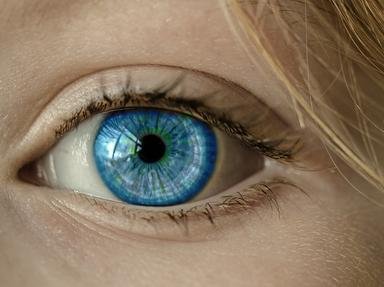Quiz Answer Key and Fun Facts
1. Controls the amount of light reaching the back of the eye and providing the color.
2. Transmits light to the back of the eye.
3. Visible "white" area of the eye.
4. Transparent front of the eye.
5. Cause of the "blind spot" of the eye.
6. Allows the eye to see colors.
7. Allows the eye to have peripheral vision
8. Bony cavity that holds the eye.
9. Pigmented middle of the layers of the eye.
10. Gel-like substance that fills the empty spaces of the eye.
Source: Author
bernie73
This quiz was reviewed by FunTrivia editor
rossian before going online.
Any errors found in FunTrivia content are routinely corrected through our feedback system.

